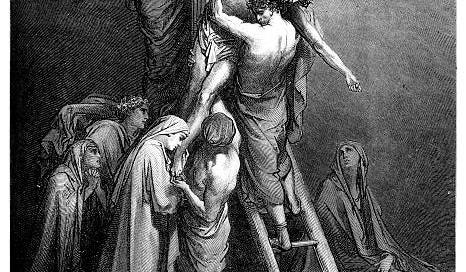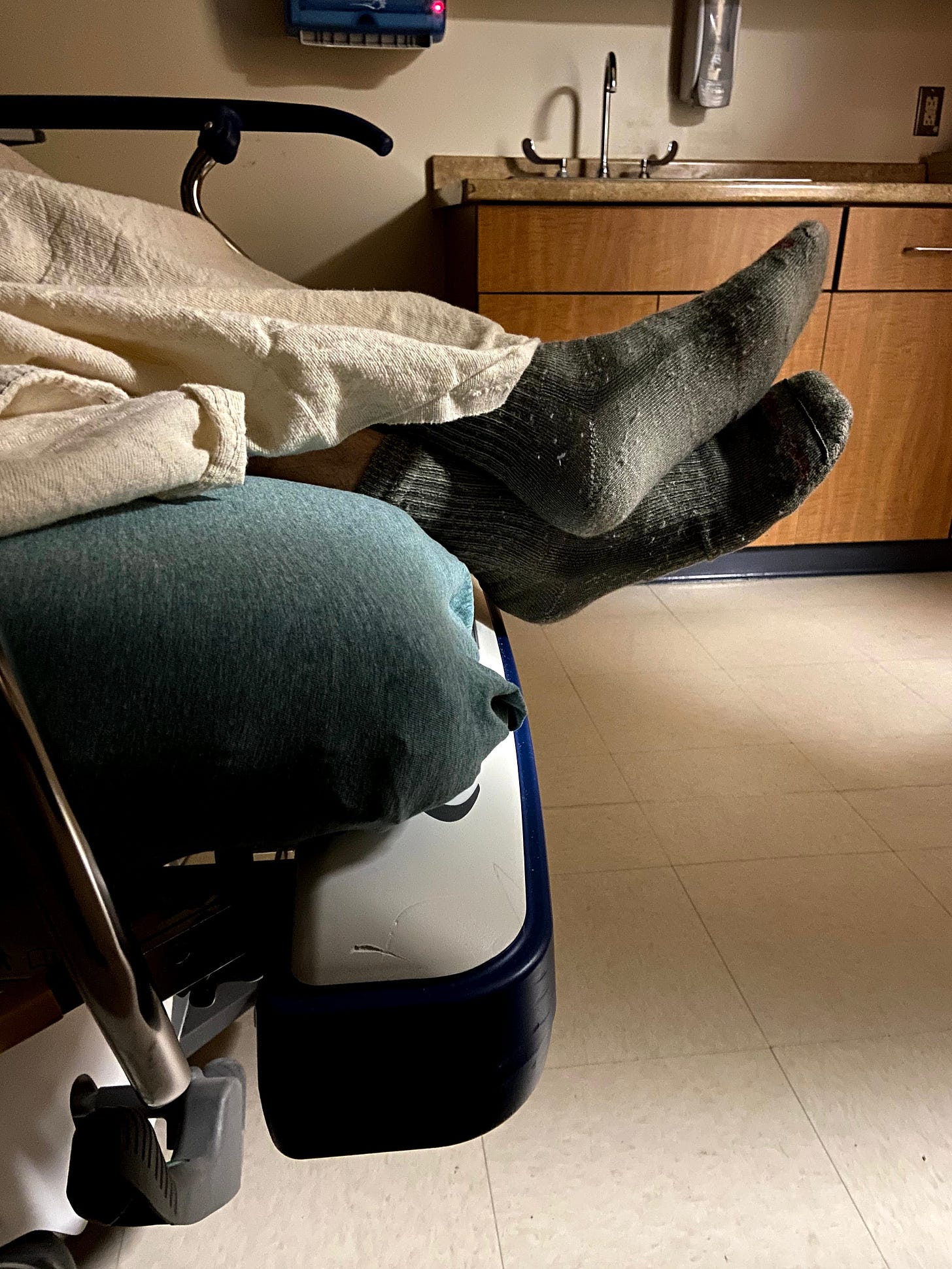Four years ago this month, I was on my last run of the day on a spring break ski trip when I came upon an accident. All I could tell as I stopped to pick up the fallen gear littering the slope was that two skiers had collided; not until I got closer did I realize one of the skiers splayed out on the snow was not moving – and it was my husband.
Time is a fickle thing. It moves too quickly when you grasp at it, and in the worst moments, it slows to an excruciating crawl, allowing each detail to etch in your mind. The image of his bright red blood on the white snow is as clear to me now as it was then. I remember how my breath caught until I could hear his, labored but steady. I can still hear the questions he asked over and over, unaware of himself, and the pain in my voice as I gave him the same answers.
As he came to and his looping thoughts became less repetitive, my mind became increasingly stuck. Kneeling in the snow waiting for ski patrol, driving through the mountains to the nearest ER, waiting for the CT results, all I could think was help! When the doctor said the helicopter was on its way, on the three hour drive without cell service, through every second of his surgery, my thoughts were like the thwock thwock thwock of the chopper that carried him away. He might not make it. Help! He could bleed out at any moment. Help! It’s a miracle he survived this long. Help! Help! Help!
We don’t know when or who told Mary that Jesus had been arrested, or how she found out that her son would be crucified, but we know that Mary was there, because John 19:25–27 tells us that Jesus beheld His mother from the cross and entrusted her and John to each other. There is much that can be said about this last documented interaction between Jesus and Mary, but one thing stands out: she was near enough to hear Him speak. Sure, His voice must have carried well when He spoke to thousands in the Galileean countryside. These, however, are the last words of a man dying in agony. If Mary heard His words, she was near enough to heed His wounds, perhaps to touch his tortured body.
The body does strange things when it beholds death and carnage. Some vomit or shake uncontrollably, as if trying to expulse a vision the brain cannot compute. Others shut down, lose consciousness, or dissociate. John only tells us that she beheld him, and leaves it to the reader to imagine how she processed the sight of her tortured son. Surely the strips of flesh torn from his back, the blood pooling on the ground, the last ragged gasp for air were all etched into her memory. Perhaps his final words looped in her mind all the next day as she grieved in the upper room with His friends.
Perhaps the strangest response of our bodies to bloodshed is the most common– desensitization. In the case of Christ, we disconnect from His suffering because of both over-familiarity and lack of familiarity: we are indifferent to the cross because we hear its story so often, and also because it is utterly beyond our comprehension. We can barely envision a crucifixion, much less the suffering of the incarnate Son of God.
If you, like so many of us, are approaching Easter feeling rather unfeeling, looking for a spiritual reaction you can’t seem to manufacture, look with me at Mary at the foot of the cross. Her grief is an icon that teaches us how to feel–it doesn’t take much effort or creativity to imagine what Mary experienced at Golgotha. Some know the horror of losing a child; the rest of us likely know other kinds of suffering. Either way, Jesus Himself invited us to share in Mary’s grief, saying that all who hear the Word of God and keep it are His mother and brothers (Luke 8:19–21, Mark 3:31–35, Matthew 12:46–50). Only here at the cross do we see the cost of that shared intimacy: shared, visceral grief.
Mary’s suffering teaches us not only how to grieve Jesus on the cross, but how to lament our sin that put Him there. We cannot see, taste, or touch how our sin grieves the Lord, but He gives us an example in Mary. What is God’s sorrow over sin like? Like the gut-wrenching wailing of a mother watching her son tortured to death.
I did not realize the extent to which my body held on to a tension my brain could not process until the surgeon finally called and said Brian made it through surgery. I have never exhaled like I did when he was given back to me, worse for the wear, but very much alive. This moment that looms so large in my memory is but a small image of the resurrection. How much more did Mary feel when Mary Magdalene, Peter, and John burst in the upper room with the news? Did she believe it? Faint? Dance? Or–finally–just breathe? We don’t know; the Gospels leave it to the imagination.
This we do know. For now, Heaven belongs to the imagination, but when we experience resurrection, it will be like the reunion of a mother and her child that was lost to death, and is now very much alive, never to be lost again.







Beautiful
I always love reading your posts! Keep writing - you are so gifted.